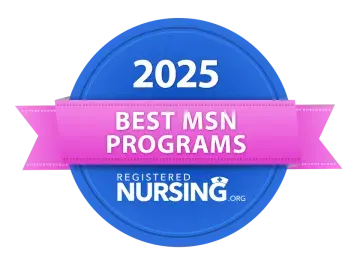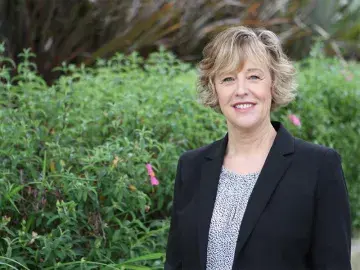Physician Assistant Students Focus on Family Health in Central Valley
The first thing visitors notice about Pixley, California, is the dust.
Sheets of fine, dry dirt sweep across miles of grape fields and almond orchards before they appear to settle in the Central Valley town, population 3,310.
In the middle of Pixley, at a clinic located beneath the town water tower, is where SMU physician assistant student Miguel Coria will spend two months to fulfill one of his clinical rotation requirements.
And he wouldn’t want to be anywhere else.
“This is the community I was meant to serve,” Coria said one morning as the temperature reached 90 degrees. “This is where people need healthcare providers the most, in places like Pixley.”
For Coria and a few fellow PA students, the Central Valley is where the heart is.
During his summer rotation, Coria lives in rent-free student housing in nearby Kingsburg with several other SMU students who commute to clinics dotted along Route 99. They attend to residents who live in the rural communities as well as migrant farmworkers.
The hands-on, immersive experience — along with the commitment to serving diverse communities — is a key reason why Coria chose SMU.
“I knew if I came to Samuel Merritt University I’d get a chance to work with patients who need me,” said Coria, who was born in Mexico. “The University’s emphasis on serving underserved populations was what really appealed to me when I decided to become a PA.”
Coria chose the PA route over medical school for a simple reason: time. With a college-aged daughter and a teenager, Coria wanted to complete his graduate studies in less than three years.
“It’s not just me. I have a family,” Coria said. “If I were to go to medical school, it’d be eight years, a residency, and a lot of debt. As a PA, it’s less than half the time and I get to work in any specialty of medicine I want. I happen to like family practice, so this is where I’ll stay.”
Thanks in part to the practicality and the lower cost of PA school — and rising salaries — the PA profession is experiencing an unprecedented boom, according to trade associations.
The National Commission on Certification of Physician Assistants reported the profession’s average annual salary reached $102,000 in 2016, up from $98,000 two years prior.
The report also found a shortage of doctors coupled with a trend toward “value-based care” appeared to drive demand for PAs; since 2010, the profession grew 44 percent to 115,547 PAs in 2016 compared to 80,019 five years earlier.
All of this is welcome news to Michael DeRosa, PhD, cochair of SMU’s PA program.
“Yes, we’re seeing an increase in the volume of applicants, but more importantly we’re getting a surge in quality as well,” DeRosa said. “We’re seeing really dedicated people who want to enter the PA field, like Miguel, because they know they can make a difference as a primary care provider in communities almost immediately.”
Back at the Pixley Medical Clinic, Coria and his mentor will serve about 50 patients in a single workday — and nearly every day for the two-month rotation.
“We see everyone who walks through the door,” Coria said. “Young, old, insured or uninsured.”
The open-door policy is critical to improving community health, said Maria Guzman, the office manager at the clinic. The building is technically a healthcare facility, but with its large waiting room and air conditioning, it also serves as community gathering center.
“Sometimes people will walk in with a stack of their mail and just ask us to translate,” she said. “They know we’re here to help people, so they come here with lots of questions and we’re happy to help.”
About 70 percent of the patients use Medi-Cal and another 10 percent are uninsured, Guzman said. The caseload swells during the harvest seasons, and the clinic keeps its doors open past 7 p.m. during the summer months.
“The workers get home at 6 p.m., then still have time to visit here if they need a medical checkup,” she said.
For Coria, the intense volume of patients and the community focus make Pixley a place he’d like to work one day.
As PAs, we can do it all,” Coria said. “And here, we’re going to see it all. In some ways, a lot of these patients have been abandoned by the healthcare system; I want to help them return to it.”


